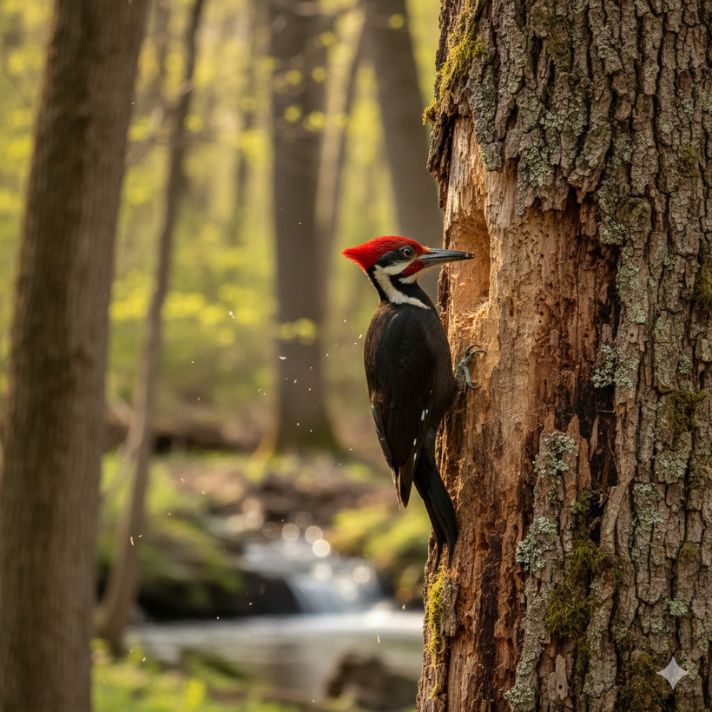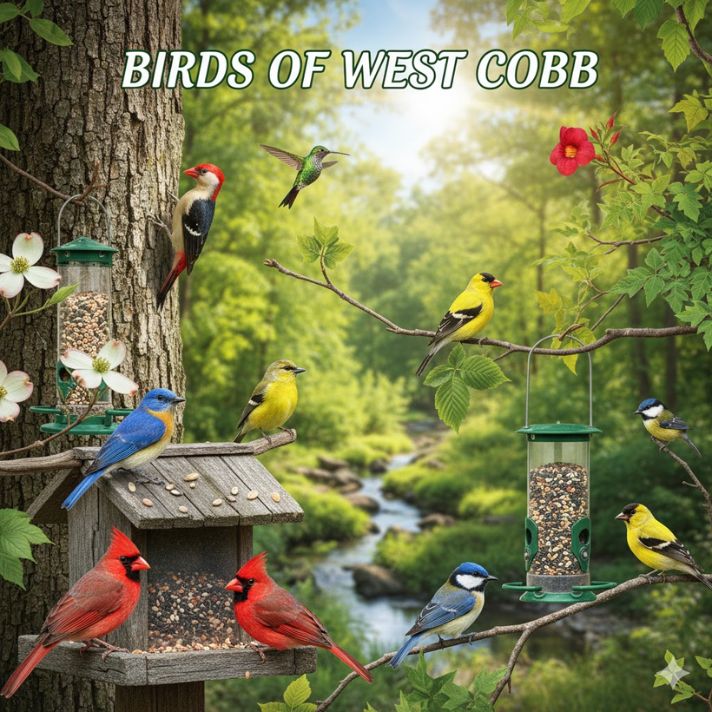Birds of West Cobb is a friendly space for bird lovers who enjoy watching and learning about local wildlife. It focuses on the beautiful bird species found in the West Cobb area, especially those that visit backyards, parks, and nearby forests. Each story or post shares real experiences from nature walks, photography sessions, and quiet moments spent observing birds in their natural homes.
The blog is run by people who truly love nature and photography. They often spend time capturing stunning pictures of woodpeckers, chickadees, nuthatches, and many other birds that make this region so lively. Their photos and stories help readers feel connected to nature, even if they are just scrolling from home.
What makes Birds of West Cobb special is its personal touch. The writers share their day-to-day birdwatching adventures, tips on how to attract birds to your yard, and advice on bird photography. Whether you’re new to birdwatching or already an enthusiast, this page invites you to slow down, step outside, and enjoy the calm beauty of birds right in your own backyard.
The Pileated Woodpecker: North America’s Largest Woodpecker
The Pileated Woodpecker is one of the most striking birds in North America. With its bold red crest and loud call, it easily catches attention in any forest. This large woodpecker species often lives in mature trees, where it searches for insects and grubs under the bark to feed on.
You can often spot a male Pileated Woodpecker by the red stripe under his beak, while the female woodpecker has only the red crest. They use their strong beaks to dig into dead trees for food and nesting. Their rhythmic pecking sounds echo through the woods, making them easy to notice from afar.
The Pileated Woodpecker visits Birds of West Cobb
The Pileated Woodpecker recently visited Birds of West Cobb, creating a moment of pure excitement for every birdwatcher. Its bright red crest and strong wings stood out beautifully against the trees. As it pecked at the bark, the sound echoed through the yard, reminding everyone why backyard bird photography is so rewarding.
How can you tell a Male Pileated Woodpecker from a Female Pileated Woodpecker?

The male Pileated Woodpecker has a red stripe under his beak, while the female does not. Both have bright red crests and black-and-white feathers. However, the male’s markings are bolder, and he often appears slightly larger and more confident while pecking at trees.
The red “mustache” or stripe on the male helps birdwatchers tell them apart easily. When you spot a Pileated Woodpecker in your yard, watch closely around the face and beak. This small color difference is the key to identifying their gender.
Both males and females share the same strong beaks and loud calls. They work together to build nests in dead trees and protect their territory. Once you learn their markings, telling them apart becomes much easier during birdwatching or photography sessions.
What do Pileated Woodpeckers Typically Eat?
Pileated Woodpeckers mostly eat insects they find inside trees. They love carpenter ants, beetles, and insect larvae hidden under bark. Sometimes they also eat nuts, berries, and even tree sap, especially in spring when insects are harder to find.
Their strong beaks help them dig deep into rotting wood to find grubs. You’ll often see them hammering away at old trees, leaving long rectangular holes behind. These feeding spots can even help other wild birds find leftover insects.
In winter, when insects are rare, they may visit bird feeders. Offering suet cakes or other high-energy treats can help them stay active and healthy. They need plenty of protein and fat to keep their energy up through cold months.
How Can I Attract Pileated Woodpeckers to my Bird Feeders?
To attract a Pileated Woodpecker to your yard, offer foods they love, like suet cakes, nuts, or bark butter. Place the feeder near trees so the bird feels safe while eating. Avoid using plastic feeders that can’t handle their strong pecks.
These large birds prefer quiet spaces with tall trees and natural surroundings. Keeping dead trees or logs can help attract insects, which in turn attract woodpeckers. A mix of food and habitat gives them every reason to visit often.
Also, provide fresh water sources like a birdbath. They enjoy drinking and cleaning their feathers there. With patience and the right setup, you might see these magnificent birds visit your feeder regularly throughout the year.
How did you Attract Pileated Woodpeckers to Your Yard?

We attracted Pileated Woodpeckers by keeping an old tulip poplar tree that had started to die. It became home to many insects and larvae, which these birds love to eat. The hollow spaces also provided shelter and nesting spots.
Over time, the dead tree’s peeling bark and open sections drew more bird activity. Smaller species like Downy Woodpeckers and nuthatches also began visiting. This natural environment made our yard a perfect feeding ground for larger woodpecker species too.
We also added suet feeders and avoided cleaning every fallen branch. Leaving nature a little “messy” helped attract more insects. That simple choice invited the Pileated Woodpecker to return again and again to our backyard.
How Tall are Pileated Woodpeckers?
The Pileated Woodpecker is one of the largest woodpeckers in North America, standing about 18 inches tall. Its tall, upright body and long beak make it easy to spot, even from a distance. The red crest adds to its bold appearance.
When perched on a tree, it looks almost crow-sized. Its large size helps it reach deep into bark layers for food. Despite their height, these birds move gracefully from branch to branch, always alert and active.
Their long neck and powerful legs also make them skilled climbers. They can cling tightly to tree trunks while searching for insects, showing both strength and balance in every movement.
What is the Wingspan of a Pileated Woodpecker?
The Pileated Woodpecker has a wingspan of around 30 inches, or about 2.5 feet. When it spreads its wings in flight, it looks truly majestic. The black wings with white patches stand out beautifully against the forest background.
Its wide wings help it glide smoothly between tall trees. You can often hear a slow, deep wingbeat when it flies across open spaces. Compared to smaller woodpeckers, its flight feels slower but more powerful.
This impressive wingspan also helps it balance while climbing and pecking at large trunks. Watching one land on a tree and open its wings is an unforgettable moment for any birdwatcher.
Conclusion
The Pileated Woodpecker is truly a wonder of North American forests, known for its beauty, strength, and importance to nature. From its tall frame and bright red crest to its echoing calls, every sighting feels special. These birds help forests stay healthy by controlling insects and creating homes for other wildlife.
Watching or photographing them brings pure joy to any birdwatcher. By keeping dead trees, offering suet feeders, and protecting natural spaces, we can attract and support these magnificent woodpeckers. Their visits remind us to slow down, look closer, and appreciate the wild beauty thriving right in our own backyards.
FAQ’S
What makes the Pileated Woodpecker special?
The Pileated Woodpecker stands out for its bright red crest, loud call, and impressive size, making it North America’s largest woodpecker species.
Where can you find Pileated Woodpeckers?
You can find Pileated Woodpeckers in mature forests, wooded parks, and quiet backyards with large dead trees that provide food and nesting spaces.
What do Pileated Woodpeckers eat?
They mainly eat carpenter ants, beetle larvae, nuts, berries, and sometimes tree sap. They use their strong beaks to dig insects out of wood.
How can I attract Pileated Woodpeckers?
Provide suet cakes, bark butter, and leave old trees standing. These offer food and shelter, making your yard welcoming to woodpeckers.
How big is a Pileated Woodpecker’s wingspan?
A Pileated Woodpecker has an impressive 30-inch wingspan, allowing it to glide smoothly through forests and perch easily on large, sturdy tree trunks.



